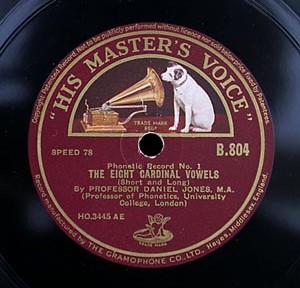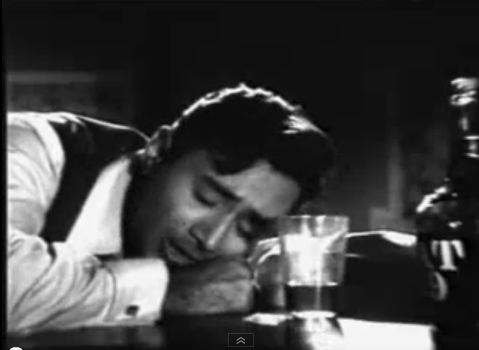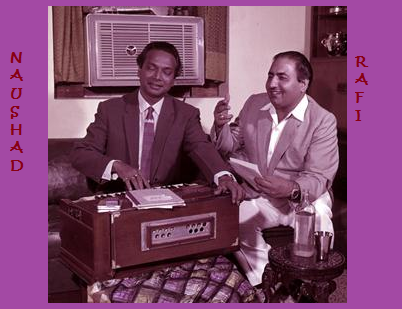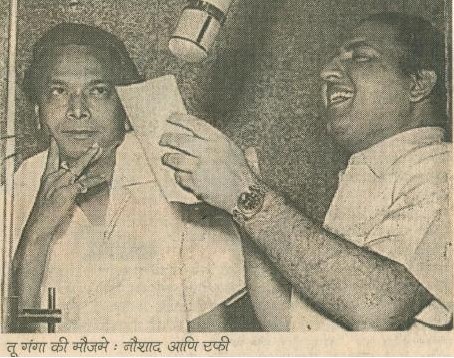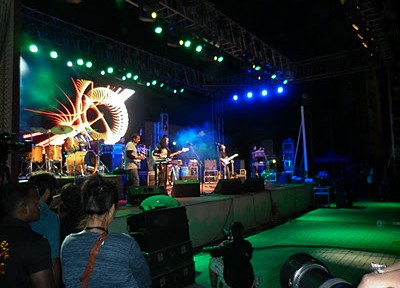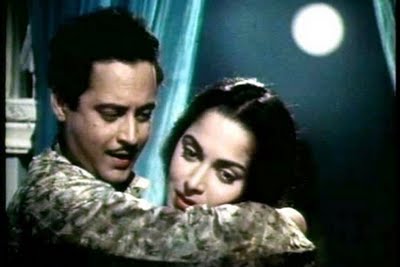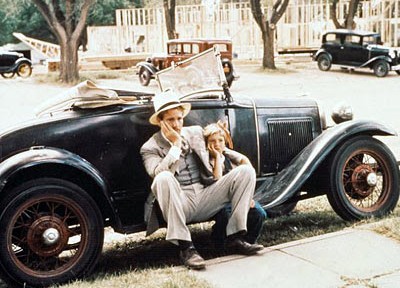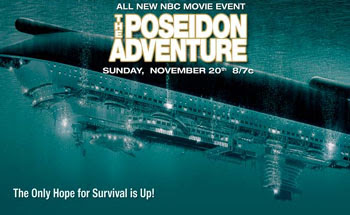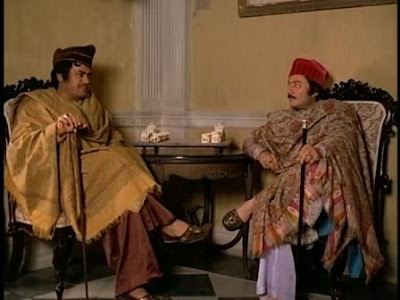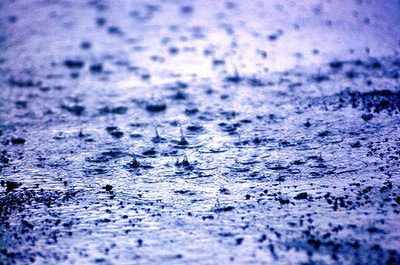 Anand Bakshi’s lyrics were extremely apt and subtly hard-hitting, eg, “Tu kaun hai tera naam hai kya Sita bhi yahan badnaam hui.”. Rajesh Khanna and Sharmila Tagore both underacted superbly.
Anand Bakshi’s lyrics were extremely apt and subtly hard-hitting, eg, “Tu kaun hai tera naam hai kya Sita bhi yahan badnaam hui.”. Rajesh Khanna and Sharmila Tagore both underacted superbly.The movie had some excellent songs which surprisingly (because these were serious and not lilting) became quite popular. For example, Raina beeti jaaye, shyam na aaye; Ye kya hua, kaise hua, kab hua: Chingaari koi bhadake; and this one which I have selected for you portraying the theme of the movie: Kuchh to log kahenge, logon ka kaam hai kehna(People will find something to say; they always do). The music is by Rahul Dev Burman.
https://youtube.com/watch?v=95UdAo4JdJI%3Ffs%3D1
AGE OF INNOCENCE in the Hindi movies is nostalgically remembered by all of us. At one time in the Hindi movies (before we bastardised them by calling them Bollywood movies) it wasn’t the done thing to be direct about such emotions as Love. Do you remember a very young Sharmila Tagore singing in 1964 movie Kashmir Ki Kali: ‘Muhabbat jo karte hain vo, muhabbat jatate nahin; dhadakane apne dil ki kahin kisi ko sunaate nahin. Maza ka raha jab ke khud kar diya ho muhabbat ka izehaar apni zubaan se?”
Kashmir Ki Kali too was a Shakti Samant movie. Lyrics were by SH Bihari and music by OP Nayyar. A young Shammi Kapoor (son of a rich father) acts opposite a younger Sharmila Tagore (who sells flowers for a living). Hats off to Omkar Prasad Nayyar, born in Lahore on 16 Jan 1926 when Lahore was in undivided India. He started his career in Hindi movies in 1949 by composing background score for the movie Kaneez. He must be having a record for the highest number of hit songs for any movie that he composed music for, eg, Aar Paar, Tumsa Nahin Dekha, Phir Wohi Dil Laya Hoon, CID, Mr and Mrs 55, Naya Daur, Howrah Bridge,Phagun, Jaali Note, Mere Sanam and Dus Lakh. Meanwhile, enjoy this hit number from Kashmir Ki Kali: Isharon isharon se dil lene waale bata yeh hunr tune seekha kahan se? None of OP Nayyar’s songs were sung by Lata Mangeshkar. This one is a duet between Mohammad Rafi and Lata’s sister Asha Bhosle:
https://youtube.com/watch?v=HxZyRkqo0r0%3Ffs%3D1
Shammi Kapoor was the middle one of the three sons born to Prithviraj Kapoor, the elder one being Raj Kapoor and younger one being Shashi Kapoor. Prithviraj was a leading light of theatre in Calcutta and Shammi Kapoor (born Shamsher Raj Kapoor) had his early education in Calcutta, later moving to Bombay. His playboyish image got honed in movies like Tumsa Nahin Dekha and Dil Deke Dekho. However, he always wanted to do serious roles. His most memorable serious role came in 1970 movie Pagla Kahin Ka where he played a mentally deranged person who by his innocence brought home the contrast that others in society were even more deranged than him. His song in the movie ‘Tum mujhe youn bhula na payoge’ is simply ungorgettable. However, I am presenting to you songs representative of Age of Innocence and I can’t find a better song for Sahmmi Kapoor on this theme than this one from the 1964 movie Brahmachari for which he got his first Filmfare Best Actor award. Of course, two years before his death Shammi Kapoor got the coveted Phalke Legend Actor Award by the Dadasaheb Phalke Academy but Brahmachari award must have been close to his heart. Brahmachari song is representative of the theme of the movie: Shammi Kapoor being an orphan looking after umpteen orphan children against all odds. The great Shailendra got the Best Lyricist award for this song and the incomparable duo of Shankar Jaikishan the best music director for the film. Mohammad Rafi got Filmfare award for another song ‘Dil ke jharokhe se’ but, undoubtedly, the best song in the movie was Main gaaoon tum so jaao:
Lets shift to the great and the ‘youngest’ actor in the Hindi movies Dev Anand. His death at the age of 88 came as a great shock to all of us for the simple reason that we were first expecting him to grow and look old and then only die. Who can ever forget that toothy smile and the becoming way of shaking and tilting one side of his torso whilst looking at you with twinkling eyes? Dev Anand got his first filmfare award for the 1958 movie Kalapani that he produced. This song that Dev Anand enacted opposite the effervescent Madhubala is so innocent both in lyrics and in acting that it really is an anthem for the Age of Innocence. Lyrics are by Majrooh Sultanpuri and music by Sachin Dev Burman; the pair was together in many of Dev Anand movies. Here it is then: Achha ji main haari chalo maan jaayo na:
https://youtube.com/watch?v=g2rFmmdUIbQ%3Ffs%3D1
The 1969 movie Aradhana (worship) presents two roles of Rajesh Khanna, one as Arun in love with Vandana (Sharmila Tagore); he sings a song to her from the adjoining road when she is in a train to Darjeeling reading an Alistair MacLean novel. The song became a superhit song ‘mere sapno ki rani kab aayegi tu’. It was rated as the amongst the ten most songs of Hindi movies. They don’t get married but as a result of their having taken shelter in rain where he seduces her with the song ‘Roop tera mastana’, she becomes pregnant. He is an IAF pilot just like Raj Kapoor in Sangam. However, unlike Raj Kapoor, he is actually killed.
Vandana’s family abandons her and she is forces to work as a nanny for her own son Suraj who is adopted by a childless couple. Vandana is stalked by Shyam (Manmohan) and is nearly raped but her own son Suraj arrives and stabs his uncle to death in order to save her. When the police arrives, Vandana takes the blame upon herself and spends time in the jail whilst Suraj grows into the likeness of his dad Arun (Rajesh Khanna).
What a story it was. Suraj too becomes an IAF officer (weren’t they obsessed with IAF pilots at that time, the ultimate macho man with Ray Ban glasses?) and falls in love with Renu (Farida Jalal).
During those days, as I brought out in the Kashmir Ki Kali song earlier, acknowledgement of love was not direct and in-your-face like these days. Here is Suraj asking Renu a series of questions so that somehow she’d acknowledge being in love with him. Anand Bakshi wrote the lyrics with music by SD Burman. Rafi and Lata have sung for Suraj and Renu respectively: Baagon mein bahar hai?
https://youtube.com/watch?v=78JhA_TJvBI%3Ffs%3D1
Before I turn to songs by other actors and actresses and singers on the Age of Innocence, lets have just one more song of Dev Anand, one of the three great and inimitable actors that we lost during the course of last one year.
Look at and hear this duet and tell me where all do you see innocence: is it in the mischievous smile of Dev Anand? Is it in the shy enthusiasm of Kalpana Kartik or is it all over there in the loving atmosphere or is it in all these things? This duet should be representative of that era; the era which can only be called the golden era or the age of innocence.
The duet has all the bests in it. First of all the movie Nau Do Gyaraah was produced by Dev Anand and was the directorial debut of his brother Vijay Anand (do you remember Kala Bazaar, Guide, Johnny Mera Naam, Jewel Thief, Haqeeqat, Kora Kagaz and Teesri Manzil?). Majrooh Sultanpuri wrote some of his best lyrics for the movie such as Hum hain rahi pyaar ke, dhalti jaaye chunariya, Kali ke roop mein. SD Burman gave music for most Dev Anand movies and gave superb music for this movie too. Finally, that was the era of the duets and there is nothing to beat Asha Bhosle pairing with Kishore Kumar. Enjoy Aankhon mein kya ji:
https://youtube.com/watch?v=edqh8JLnV7s%3Ffs%3D1
Age of innocence wasn’t just about Love only; it was about good conduct, good manners, trusting, lack of cunning and deceit except in the villain. A number of songs (thousands) came up during that era celebrating innocence. I give you just a few of them.
What can be more innocent than this song I have selected for you? The name of the movie is Anari (Naive). It came during an era when Innocence and Naivete were desirable virtues and not looked down upon. Indeed, cleverness and cunning were not considered smart as these are today. Anari is a 1959 Bollywood film directed by Hrishikesh Mukherjee. The film stars Raj Kapoor, Nutan, Motilal and Lalita Pawar. The music was by Shankar Jaikishan and the lyrics by Hasrat Jaipuri (just one song, ie, Ban ke panchhi gaaye pyaar ka taraana) as well as Shailendra (both lyricists and music directors being regular in Raj Kapoor films). Among the few movies that Lalita Pawar played a positive role and Motilal a role with shades of grey. Raj Kapoor is the innocent hero of the movie who falls in love with a maidservant played by Nutan. Little did he know that she is the daughter of the person who gave him employment when he couldn’t make a living through trading and painting. His landlady played by Lalita Pawar dies of poisoning and now Raj must prove his innocence – not his Chaplinesque innocence but real one. Just see in this song how Nutan chides Raj Kapoor for being so naive as not to understand the atmosphere or the aura of love. The title of the song is: Vo chand khila vo taare hanse, ye raat ajab matvaali hai; samajhane vaale samajh gaye hain, naa samajhe vo anari hain:
https://youtube.com/watch?v=OvtU5FYxK-c%3Ffs%3D1
Anari was a 1959 movie directed by Hrishikesh Mukherjee. Raj Kapoor and Nutan look so fresh and – you guessed it – innocent that one misses that era when it didn’t pay to be clever and cunning. Another song from the movie is the anthem of innocence and Shailendra got the Best Lyricist award for this song just as Raj Kapoor got the Best Actor award for the movie. Mukesh, who has sung most of Raj Kapoor’s songs, got the best singer award for this movie. Also, the best ever music duo of Shanker Jaikishan got the Best Music Director award for the movie. The song is also my facebook profile song. Enjoy this anthem of innocence; the answer to Nutan asking Raj Kapoor why is he so naive. The song says: sab kuchh seekha humne na seekhi hoshiyari:
https://youtube.com/watch?v=d1BIf0PN5x4%3Ffs%3D1
Balika Badhu (The Girl Wife) is a 1976 Hindi film produced by Shakti Samanta and directed by Tarun Majumdar. The film is based on the Bengali novel by the same name by Bimal Kar, about a young girl who is married before she is old enough to understand what marriage is all about, against the backdrop of Indian freedom struggle. Gradually she and her school-going husband grow as a couple and begin to love one another. The film was previously made into a Bengali film, Balika Badhu (1967), starring Moushumi Chatterjee, by Tarun Majumdar himself. This romantic comedy drama stars Sachin with Rajni Sharma, Asrani, A. K. Hangal, Asit Sen, Paintal and Om Shivpuri. The music is by R. D. Burman and lyrics by Anand Bakshi, who penned several hits in the film including “Bade Achchhe Lagte Hain…”, which was singer Amit Kumar’s first hit and featured on the Binaca Geetmala annual list 1977. Enjoy:
https://youtube.com/watch?v=3pN7sITXVyk%3Ffs%3D1
The one is really dear to me. It is by my favourite lyricist Shakeel Badayuni with my favourite singer/music director Hemant Kumar. The song is from the 1962 movie Bees Saal Baad. The movie was Hemant all the way: it was produced by him and he sang some of the best songs in the movie such as Bekraar karke humen youn na jaayiye and Zara nazron se keh do ji. Here is the plot: After a lusty Thakur rapes a young girl, she kills herself. Thereafter, the Thakur is killed by what the local people call the girl’s vengeful spirit. Then the Thakur’s son is also killed in a similar way. Thereafter the brother of the Thakur is also killed. The grandson of the Thakur, Kumar Vijay Singh (Biswajeet) returns from abroad to claim his ill-fated legacy. He is warned to stay away from the grounds that have killed his ancestors, but he intends to find out who or what is behind the killings, and hires a private detective, Gopichand Jasoos (Asit Sen). Kumar meets with Radha (Waheeda Rehman), the daughter of the local doctor, Ramlal Vaid (Manmohan Krishan), and both eventually fall in love. Then a man is found dead wearing the clothes of Kumar Vijay, and Kumar Vijay must now decide to stay away from his new residence, or continue to live there, and fear for his life everyday until death. With such a plot, where does innocence enter here? Well, listen to a young Waheeda Rehman singing this number. Going with the mystery of the plot, Lata Mangeshkar got the Filmfare award for ‘Kain deep jale kahin dil’. However, I would go for this number anytime: sapne suhaane ladakpan ke:
https://youtube.com/watch?v=AReakaj_bW8%3Ffs%3D1
Here is a very young Saira Bano in 1961 movie Junglee made famous by Shammi Kapoor with his wild yaahoo chahe koi mujhe koi junglee kahe. This girl is touched by love for the first time and she is stepping from girlhood to womanhood. Hasrat Jaipuri has captured her feelings so well in his lyrics and the best ever music duo Shanker Jai Kishan have given the kind of music that speaks excitedly of her transition. Innocence indeed: ja ja ja mere bachpan, kahin jaa ke chhup nadaan:
https://youtube.com/watch?v=OnBJLHyQxxs%3Ffs%3D1
Before I end, just one last song from the Age of Innocence. Teesri Kasam (Third Oath) is a 1966 film based on a short story, ‘Mare Gaye Gulfam’ by Phanishwarnath Renu. The film stars Raj Kapoor and Waheeda Rehman. Music of the film was by the famed duo of Shankar – Jaikishan.
The film was so much ahead of its time that it flopped at box office. Directed by Basu Bhattacharya, Teesri Kasam is an unconventional film that portrays the society of the rural India and simplicity of villagers. The whole film was shot in Araria, Bihar. Hiraman (Raj Kapoor) is a bullock cart driver with conservative traditional values. While smuggling illegal goods on his bullock cart and close escape from police, Hiraman takes vow (first Kasam) to never carry illegal goods again in his cart. While transporting bamboo for timber trader on his bullock cart, he is beaten by two men when their horses are upset by bamboos of Hiraman’s cart. After that incident, Hiraman takes another vow (second Kasam) to never carry bamboo again in his cart. One night, Hiraman is asked to carry Hirabai (Waheeda Rehman), a nautanki dancer as a passenger to the 40 miles distance to the village fair. As they travel together Hiraman sings to pass time and tells her the story of the legend of Mahua. As the journey progresses, Hirabai is mesmerized by Hiraman’s innocence and his simple philosophy of life. Hiraman in return sees her as an angel of purity. Once they reach the village fair, Hiraman joins with his band of bullock cart drivers and Hirabai joins the nautanki company. Hirabai asks Hiraman to stay at village fair for a few days to see her dance. Hirabai arranges free passes for Hiraman and his friends to see nautanki on every night as long as village fair runs. As Hiraman attends nautanki, he becomes aware that other people see her as a prostitute and it disturbs him. He tries to shield and protect her from society. The bond between two grows stronger as the days pass at the fair. He gets involved in fights with local people who speak badly about her and her profession. Hirabai tries to make him understand the harsh reality of her life. Hiraman asks her to leave her profession and start living a respectable life. Hirabai refuses to leave her acting career. Depressed, Hiraman leaves village fair and returns to his village. In the mean time, Hirabai understands Hiraman’s unselfish love. Hirabai meets Hiraman and reveals her past secret that she had been already sold and she was no longer a virgin beauty. Hirabai returns to her hometown. After seeing Hirabai going away from his life, Hiraman takes third vow (teesri Kasam) to never carry a nautanki company dancer again in his cart This song written by Shailendra Singh depicts the innocence of Hiraman: sajan re jhoot mat bolo khuda ke paas jaana hai:
https://youtube.com/watch?v=tY50kphA4-k%3Ffs%3D1
Finally, lets have a look at what Age of Innocence meant for the western people. It is the name of Edith Wharton’s novel published in 1920, which won the 1921 Pulitzer Award. The Age of Innocence centers on an upper-class couple’s impending marriage, and the introduction of a woman plagued by scandal whose presence threatens their happiness. In 1993 it was made into a Hollywood movie by Columbia Pictures.
Taste the first three stanzas of this song titled ‘Age of Innocence’ and try to think where Innocence has gone:
I can’t be compromising in my thoughts no more
I can’t prevent the times my anger fills my heart
I can’t be sympathizing with a new lost cause
I feel I’ve lost my patience with the world and all
And all the politicians and their hollow promises
And all the lies, deceit and shame that goes with it
The working man pays everything for their mistakes
And with his life too if there was to be a war
So we can only get one chance, can we take it?
And we only got one life, can’t exchange it
Can we hold on to what we have, don’t replace it
The age of innocence is fading like an old dream
Don’t we all miss the Age of Innocence?
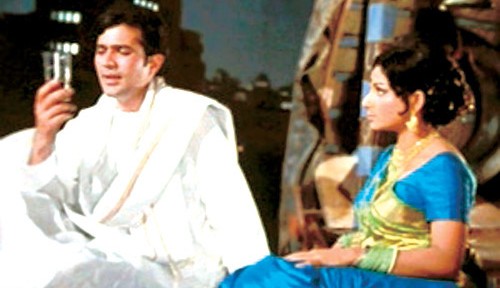
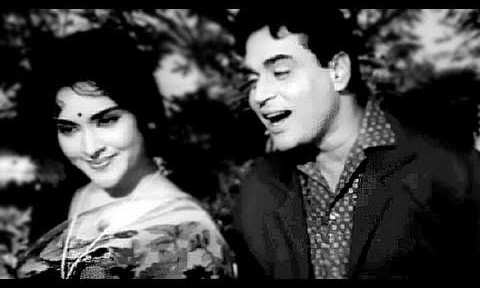
_-_All_Episodes.jpg)
